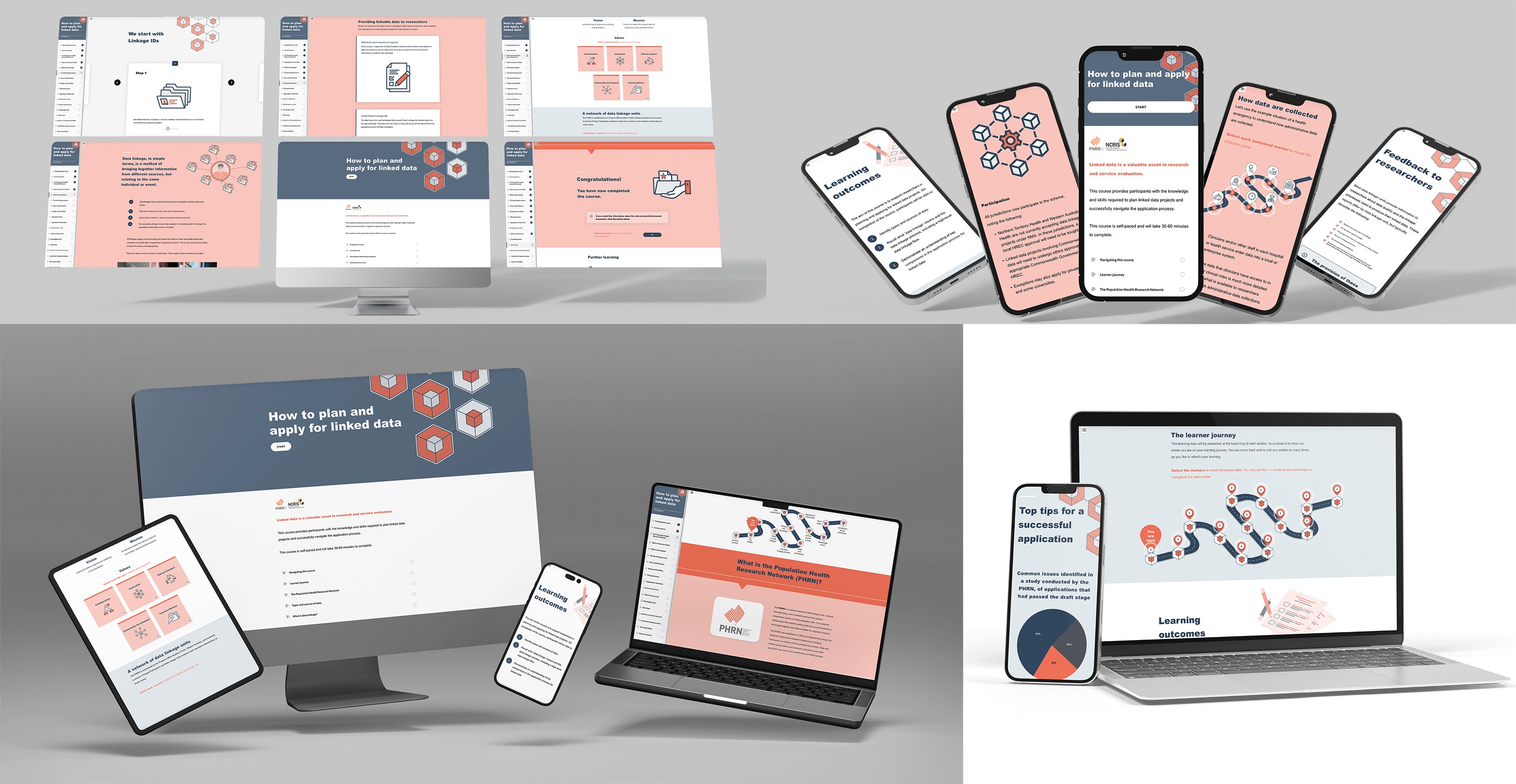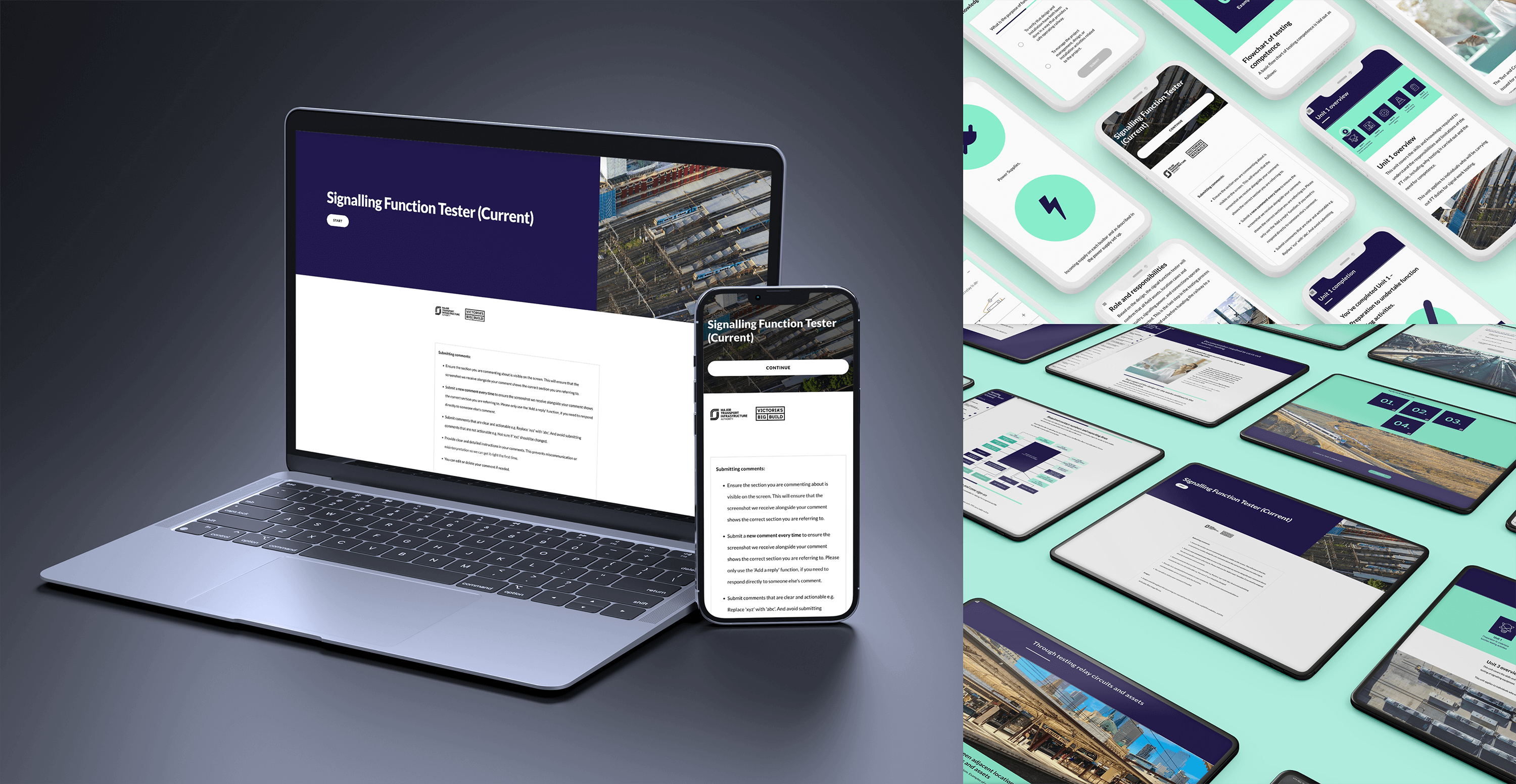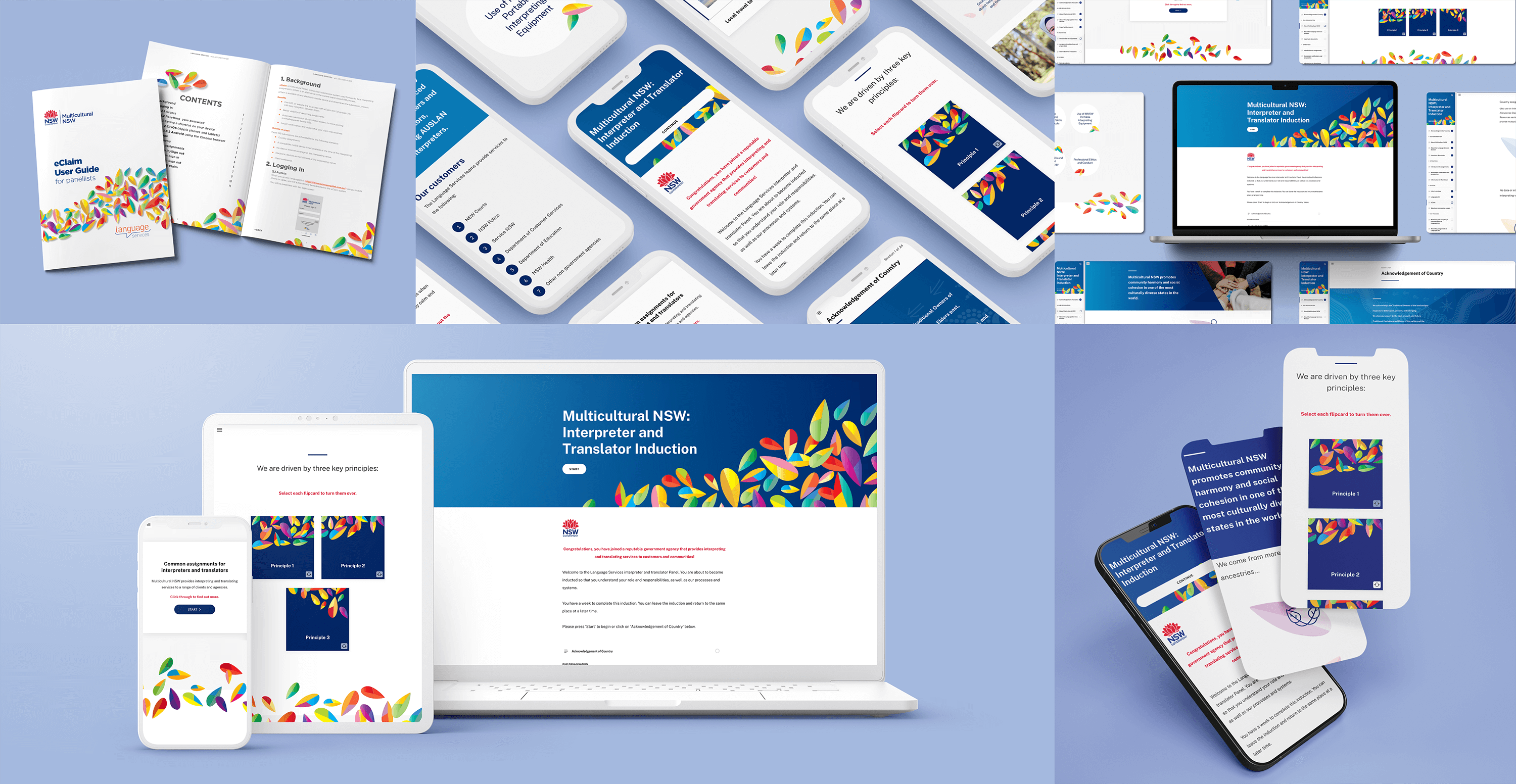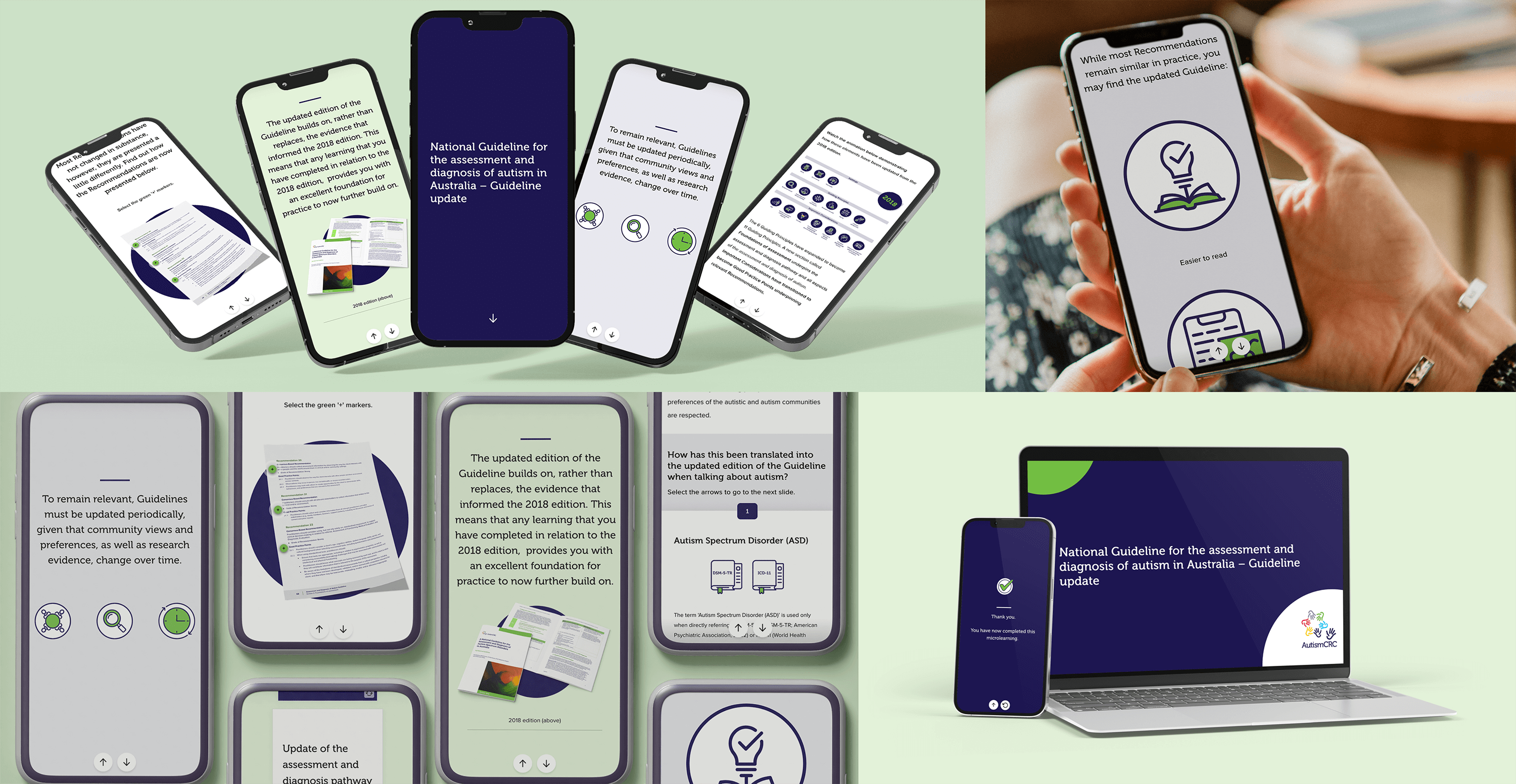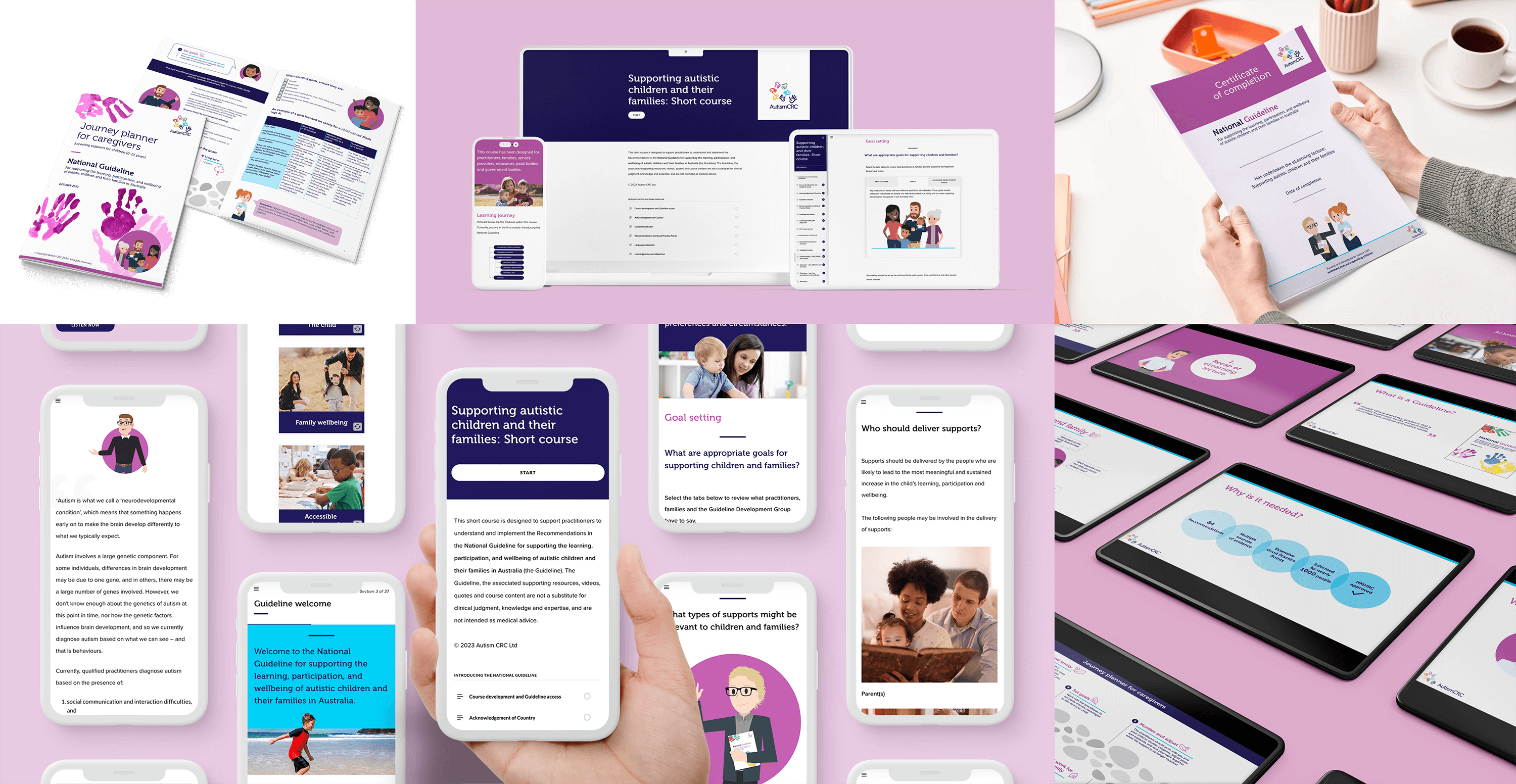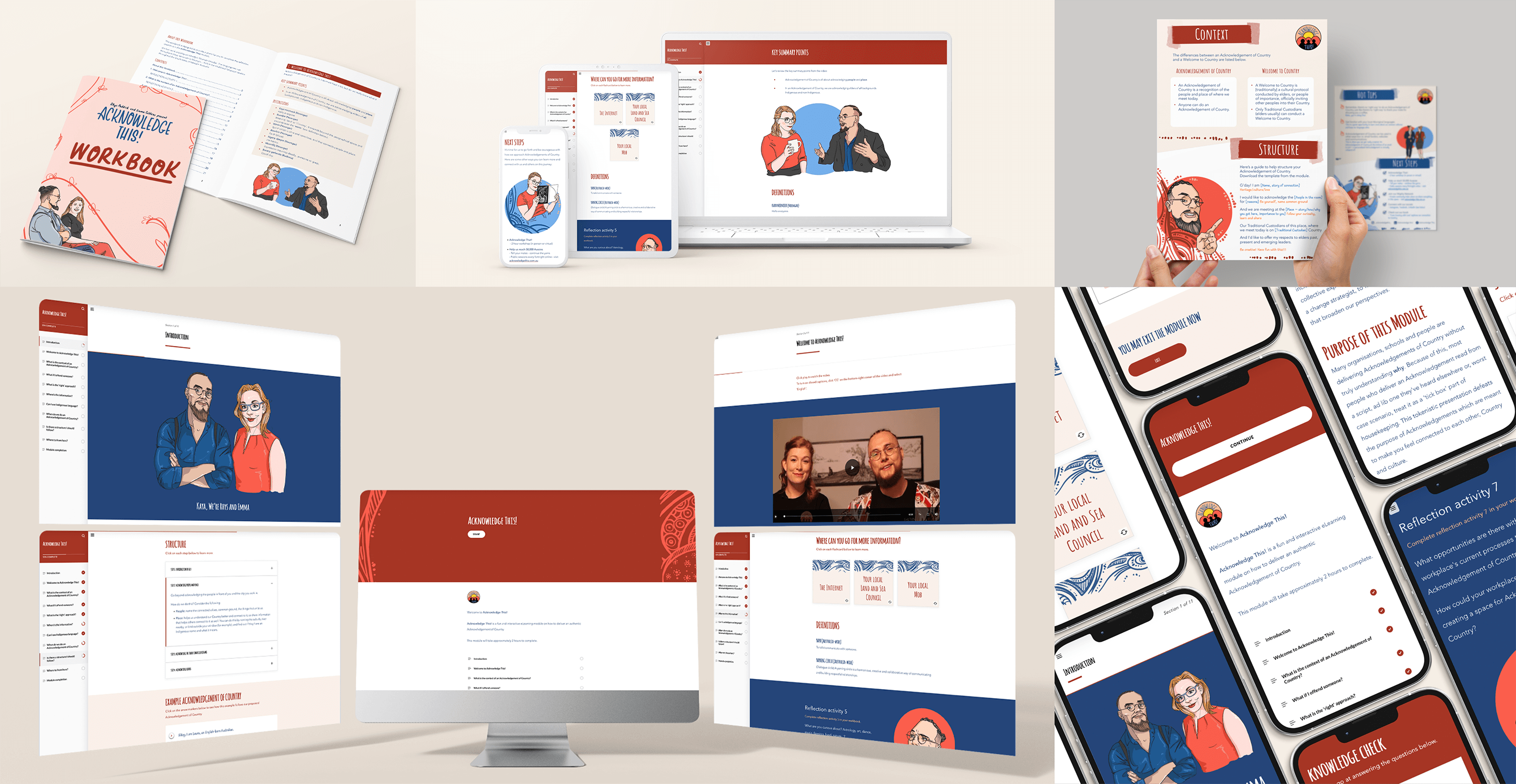Picture a world-renowned chef preparing for a grand feast. She doesn’t simply throw ingredients together haphazardly; instead, she meticulously plans each course, considering flavours, textures, and how one dish will complement the next. In the world of corporate training, learning designers play a similar role. We craft learning architectures – comprehensive recipes for educational success – that blend various ingredients (learning modalities, assessments, practical applications) into a cohesive, satisfying, and nourishing learning experience that leaves participants feeling fulfilled, empowered and transformed.
Learning architecture examples
Example 1
Example 2
Why learning architectures matter
- Strategic alignment: Learning architectures ensure that every component of a program is purposefully designed to meet specific learning outcomes and organisational goals. By providing a high-level overview, they allow stakeholders to quickly assess whether the proposed solution addresses identified needs, and provide sign-off before we begin the detailed design.
- Enhanced communication: These visual representations break down complex learning journeys into digestible segments. This clarity facilitates discussions among diverse stakeholders, from C-suite executives to subject matter experts, ensuring everyone shares a common understanding of the program’s structure and objectives.
- Efficient resource allocation: By mapping out the entire program, learning architectures help identify and plan for resource needs. This includes pinpointing where subject matter expert input is crucial, what technological infrastructure is required, and what existing materials can be leveraged or repurposed.
- Learner engagement and motivation: For participants, a learning architecture can be placed in the program to act as a roadmap, setting clear expectations and milestones on their journey. This transparency can boost motivation and engagement, as learners understand how each component contributes to their overall development.
- Holistic learning experience:
By visualising the entire learning journey, architects can ensure a balanced mix of learning modalities, pacing, and assessment strategies. This high-level view illustrates the learning strategies and how learning is scaffolded. This holistic approach promotes better knowledge retention and skill application.
How we create learning architectures
At the core of our methodology is a commitment to evidence-based design and stakeholder collaboration. Here’s how we bring learning architectures to life:
Step 1: Discovery and needs analysis
We begin with a comprehensive discovery session, diving deep into the organisation’s culture, learner demographics, and specific performance gaps. This involves:
- Stakeholder interviews
- Learner surveys and focus groups
- Analysis of existing performance data
- Review of organisational goals and strategies
Step 2: Defining learning outcomes
Based on our findings, we use Bloom’s revised taxonomy to craft learning outcomes. These serve as the foundation for all design decisions, ensuring every element of the program contributes to meaningful results.
Step 3: Curating learning experiences
We select a diverse mix of learning modalities and strategies, tailored to the audience and organisational context. This might include:
- eLearning modules for flexible, self-paced learning
- Virtual instructor-led training for interactive, real-time engagement
- On-the-job learning experiences for practical skill application
- Social learning components to foster peer-to-peer knowledge sharing
- Microlearning elements for just-in-time performance support
We draw on learning theories and research, including:
- The science of learning
- The 70:20:10 learning model
- The first principles of instruction
- Angragogy: Adult learning theory
- Ebbinghaus’ forgetting curve
Step 4: Mapping the learning journey
We create a visual representation of the entire learning experience, showing how different components interconnect and build upon each other. This map illustrates:
- The sequence and flow of learning activities
- Estimated time commitments for each component
- Key milestones and assessment points
- Opportunities for practice, feedback and reflection
Step 5: Incorporating assessment and evaluation
We integrate a variety of assessment strategies throughout the architecture, which might include:
- Pre-assessments to gauge baseline knowledge
- Formative assessments to check understanding and provide feedback
- Summative assessments to measure overall learning outcomes
- On-the-job performance evaluations to assess skill transfer
Step 6: Stakeholder review and refinement
We present the learning architecture to key stakeholders for feedback and refinement. This collaborative process ensures alignment with organisational needs and buy-in from decision-makers.
From learning architecture to high level design
Once the learning architecture is approved, we use it as a foundation to create a detailed high-level design. This expands on each component, breaking down experiences into specific time segments, outlining key topics, and describing activities. The high-level design also identifies necessary resources and demonstrates how each element aligns with learning outcomes.
This stage allows us to specify the learning materials we’ll develop, including assessment tools and evaluation methods. It helps us leverage existing resources efficiently and pinpoint where subject matter expert input will be most valuable.
To bring the vision to life, we create mock-ups showcasing the look, feel, and functionality of key materials. This gives stakeholders a tangible sense of the final product and allows for any necessary adjustments before full-scale development begins.
Wrapping up
Learning architectures are more than just pretty diagrams – they’re strategic tools that ensure learning programs are thoughtfully designed, well-structured, and aligned with both learner and organisational needs. By investing time in creating a solid learning architecture, we set the stage for impactful, engaging, and successful learning experiences that drive real results for individuals and organisations alike.
OUR WORK

